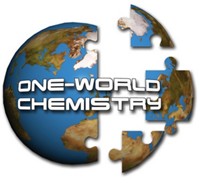Advertisement
Grab your lab coat. Let's get started
Welcome!
Welcome!
Create an account below to get 6 C&EN articles per month, receive newsletters and more - all free.
It seems this is your first time logging in online. Please enter the following information to continue.
As an ACS member you automatically get access to this site. All we need is few more details to create your reading experience.
Not you? Sign in with a different account.
Not you? Sign in with a different account.
ERROR 1
ERROR 1
ERROR 2
ERROR 2
ERROR 2
ERROR 2
ERROR 2
Password and Confirm password must match.
If you have an ACS member number, please enter it here so we can link this account to your membership. (optional)
ERROR 2
ACS values your privacy. By submitting your information, you are gaining access to C&EN and subscribing to our weekly newsletter. We use the information you provide to make your reading experience better, and we will never sell your data to third party members.
Environment
Twenty Years OF Green Chemistry
Chemists have worked hard to build awareness of and reduce hazardous chemical use over the past two decades
by Paul Anastas
June 27, 2011
| A version of this story appeared in
Volume 89, Issue 26
It's what chemists do: When a problem is identified, chemists come together to address it. They have revolutionized approaches to our most pressing challenges—from disease, to food production, to energy, and beyond. In all cases, chemists have made miraculous contributions. But 20 years ago, when the field of green chemistry was first defined and crystallized, a door was opened to a whole new set of possibilities. For two decades, chemists have used green chemistry principles to approach society’s most fundamental challenges in new and innovative ways.
By 1991, there was widespread concern over potential adverse impacts on human health and the environment from the processes, by-products, waste, pollution, and industrial chemicals in our daily lives. It was time for action. Rather than continue deferring to litigators, legislators, and regulators to reactively handle these critical problems, members of the chemistry community unified around a common goal: to design chemical products and processes that reduce or eliminate the use and generation of hazardous substances. The concept of green chemistry has stood the test of time. It captures the essence of excellent research that has been conducted and transformed into countless business and environmental successes over the course of two decades.
It is important to note that green chemistry could not have advanced or thrived without the brilliant work in the field of chemistry that preceded it. Green chemistry is built upon foundational and revolutionary advances in areas such as catalysis, atom-economical synthesis, degradable materials, alternative solvents, and many other disciplines that existed prior to the field’s inception.
COVER STORY
Twenty Years OF Green Chemistry
But green chemistry brought a cohesion to the field that resulted in major scientific breakthroughs and new kinds of synergies. In just 20 years, the field has produced thousands of scientific papers; research networks in more than 30 countries on every settled continent have been formed; at least four new international scientific journals have been published; and new fundamental scientific areas have been introduced including green solvents, biobased transformations and materials, alternative energy science, molecular self-assembly, efficient and elegant synthetic methodologies, next-generation catalyst design, and molecular design for reduced hazard.
During the same time that green chemistry was crystallizing, another field, sustainability, was beginning to gain traction. At the 1992 United Nations Conference on Environment & Development, in Rio de Janeiro, countries around the globe made commitments to the Rio Declaration on Environment & Development to help “protect the integrity of the global environmental and developmental system, recognizing the integral and interdependent nature of the Earth, our home.” Over the two decades that followed, the field of green chemistry and the goal of sustainability have grown in parallel. And as a result of their shared goals and perspectives, the activities, methods, and scientific foundations related to both fields have become inextricably intertwined. These linkages have repeatedly demonstrated that chemistry is essential to advancing the goal of a sustainable world.

It is widely recognized that a sustainable civilization requires both a healthy environment and a healthy economy. Green chemistry has unequivocally demonstrated that creative scientific design can help achieve both of these goals simultaneously and for societal benefit. Sometimes it is difficult to isolate the direct global economic contributions of green chemistry because they are deeply connected to all aspects of the chemical enterprise. But the overarching progress toward a healthier economy, as a result of green chemistry activities, is undeniable. Major advances in electronics, personal care, pharmaceuticals, automotives, energy, agriculture, building materials, and more have been documented through recognition programs, including the Presidential Green Chemistry Challenge Awards in the U.S. (see page 11) and similar programs elsewhere in the Americas, the European Union, and Asia. Since the inception of the Presidential Green Chemistry Challenge in 1995, winners have annually eliminated nearly 200 million lb of hazardous chemicals and solvents, saved 21 billion gal of water, and eliminated 57 million lb of carbon dioxide emissions. And they’ve done so with innovative chemical technologies that have broad industrial applications.
Today, green chemistry is simply a good business choice. There are no regulations that require companies to meet environmental objectives through the use of green chemistry principles. Rather, chief executive officers of companies, managers of small businesses, and entrepreneurs around the world are voluntarily choosing to use green chemistry practices because in doing so, they are able to exceed their regulatory responsibilities while increasing profits and market competitiveness.
Fittingly, when naming the new field of green chemistry, the word green was carefully chosen for its ability to conjure up both the color of the environment and the color of money in the U.S. Not only do green chemistry approaches reduce costs associated with pollution abatement, hazardous waste disposal, material inputs, and long-term liabilities, but their incorporation at the design stage can also improve product performance. Across the private sector—from small patent-based businesses to large international corporations—it is being demonstrated every day that green chemistry is an economic and environmental win-win.
Sustainability requires the recognition that energy is linked to air is linked to water is linked to agriculture is linked to health, and so on, across systems. It is based on the idea that traditional reductionist approaches, while extremely valuable, are not enough to fully understand our complex, dynamic, and integrated world. Green chemistry is grounded in the same fundamental truth. It requires looking across systems and across life cycles to design products and processes that are benign to both people and the environment.
Twelve Principles of Green Chemistry
1. Prevention It is better to prevent waste than to treat or clean up waste after it has been created.
2. Atom Economy Synthetic methods should be designed to maximize the incorporation of all materials used in the process into the final product.
3. Less Hazardous Chemical Syntheses Wherever practicable, synthetic methods should be designed to use and generate substances that possess little or no toxicity to human health and the environment.
4. Designing Safer Chemicals Chemical products should be designed to effect their desired function while minimizing their toxicity.
5. Safer Solvents and Auxiliaries The use of auxiliary substances (e.g., solvents, separation agents, etc.) should be made unnecessary wherever possible and innocuous when used.
6. Design for Energy Efficiency Energy requirements of chemical processes should be recognized for their environmental and economic impacts and should be minimized. If possible, synthetic methods should be conducted at ambient temperature and pressure.
7. Use of Renewable Feedstocks A raw material or feedstock should be renewable rather than depleting whenever technically and economically practicable.
8. Reduce Derivatives Unnecessary derivatization (use of blocking groups, protection/deprotection, temporary modification of physical/chemical processes) should be minimized or avoided if possible, because such steps require additional reagents and can generate waste.
9. Catalysis Catalytic reagents (as selective as possible) are superior to stoichiometric reagents.
10. Design for Degradation Chemical products should be designed so that at the end of their function they break down into innocuous degradation products and do not persist in the environment.
11. Real-Time Analysis for Pollution Prevention Analytical methodologies need to be further developed to allow for real-time, in-process monitoring and control prior to the formation of hazardous substances.
12. Inherently Safer Chemistry for Accident Prevention Substances and the form of a substance used in a chemical process should be chosen to minimize the potential for chemical accidents, including releases, explosions, and fires.
Too often, environmental protection efforts have focused on waste without concern for the root cause of that waste, or on the toxicity of a product without adequate attention to the feedstocks that make that product. This has resulted in an incomplete understanding of problems, inadequate solutions, and in some cases unintended consequences.
Many historical examples demonstrate that failure to consider whole systems can lead to adverse unintended consequences. Disinfection by-products in purified water systems; biofuels that compete with food and feed; and persistent, bioaccumulating pesticides used to increase crop yields are just a few of the traps that we have fallen into by approaching production, manufacturing, and environmental protection in fragmented ways.
With green chemistry, solutions require consideration of all life-cycle stages. We now know that by working at a fundamental molecular level and considering whole systems at every stage, we are able to control the basic physical and chemical properties that are the basis for both desirable performance and adverse impacts. By homing in at the molecular level, green chemistry has shown that it is possible to largely design hazards out and that we can pursue the goal of sustainability without causing unintended consequences.
For nearly a half-century, environmental protection has been marked by a series of standards. These minimum standards work by setting a pollution ceiling which, when crossed, invokes penalties usually enforceable by law. Too often, and perhaps counterintuitively, these standards have also set a virtual pollution floor.
This floor encourages the attitude that as long as compliance is attained and ceilings are not broken, there is no reason to strive for progress. This mentality is not only misguided, but also antithetical to green chemistry and sustainability. Both fields have demonstrated that working to exceed pollution and toxicity standards can be tremendously valuable. They promote continuous improvement and encourage ambitious environmental goals.
With its focus on the molecular level, green chemistry empowers us to confront health and environmental concerns as challenges of design. This approach expands the environmental protection toolbox beyond cleanups, mitigations, abatements, and treatments and frees us to pursue the kinds of proactive creation, discovery, development, invention, and transformative innovation necessary to design for sustainability. Transformative innovation does not occur by making existing approaches and methods cleaner or better; it calls for leapfrog discoveries that make the traditional approaches obsolete. For companies and academic researchers using the 12 principles of green chemistry as a framework for innovation, this is what makes the field truly exciting.
Green chemistry recognizes that while incremental improvement is important, we can do better, and we need to. Although slightly increased efficiencies, reduced toxicities, and lower pollution emissions are important steps in the right direction, we know that to achieve a sustainable world, transformative thinking and leapfrog innovations will be required.
As we celebrate the International Year of Chemistry and the 20th anniversary of green chemistry, we should reflect upon the astounding advancements made by chemistry as a whole and the progress made over the past two decades by the field of green chemistry.
All of these accomplishments rely on the sheer brilliance and creativity that pervade the molecular science disciplines. Scanning the green chemistry landscape often reveals physical and synthetic chemists in collaboration with engineers and material, nano-, and bioscientists. This interdisciplinary approach has expanded even further as the field has embraced the roles of economists, environmentalists, educators, and policymakers by turning excellent science into practical and profitable reality.

So, in celebrating the International Year of Chemistry, it is reasonable to ask, “What is over the horizon for the field of green chemistry?” The answer might include some of the great scientific challenges the field is poised to address:
How do we master molecular design for reduced hazard to human health and the environment?
How do we achieve synergies across the 12 principles of green chemistry such that they are mutually reinforcing rather than trade-offs?
How do we redefine performance of our chemical products and processes such that they are not merely attaining a narrow function but rather attaining that function without unintentional conse quences?
How do we use these new design imperatives as a basis for transformative innovation rather than simply improving on the status quo?
These challenges can only be addressed with the same creative spirit that has marked the history of chemistry as a whole—the enthusiasm and brilliance that we celebrate as part of this International Year of Chemistry.
Perhaps the greatest challenge will be to make green chemistry systematic so that every student knows its tools and principles, and every practitioner knows its power for efficiency, effectiveness, and innovation. As has been said by green chemistry leaders around the world for two decades, the field will be successful when the term fades away because it is simply what we, as chemists, do.






Join the conversation
Contact the reporter
Submit a Letter to the Editor for publication
Engage with us on Twitter